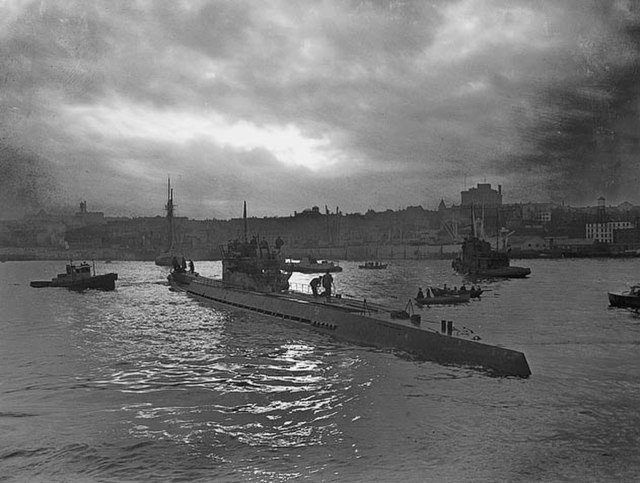Operation Kiebitz was a failed German operation during World War II to organize the escape of four skilled U-boat commanders from a Canadian prisoner of war camp in Bowmanville, Ontario. The subsequent counter operation by the Royal Canadian Navy, Operation Pointe Maisonnette, became a key engagement in the Battle of the St. Lawrence and was also successful in thwarting the Germans' plan.
HMCS Rimouski, seen here between 1944 and 1945, was the flagship in the operation that foiled the German escape attempt.
Battle of the St. Lawrence
The Battle of the St. Lawrence involved marine and anti-submarine actions throughout the lower St. Lawrence River and the entire Gulf of Saint Lawrence, Strait of Belle Isle, Anticosti Island and Cabot Strait from May–October 1942, September 1943, and again in October–November 1944. During this time, German U-boats sank over 20 merchant ships and four Canadian warships. There were several near-shore actions involving the drop of German spies, or the attempted pickup of escaping prisoners of war. Despite the 23 ships lost, this battle marked a strategic victory for Canadian forces as ultimately they managed to disrupt U-boat activity, protect Canadian and Allied convoys, and intercept all attempted shore operations. This marked the first time that a foreign power had inflicted casualties in Canadian inland waters since the US incursions in the War of 1812.
German submarine U-190 arrives in St. John's, Newfoundland in June 1945 after surrendering


